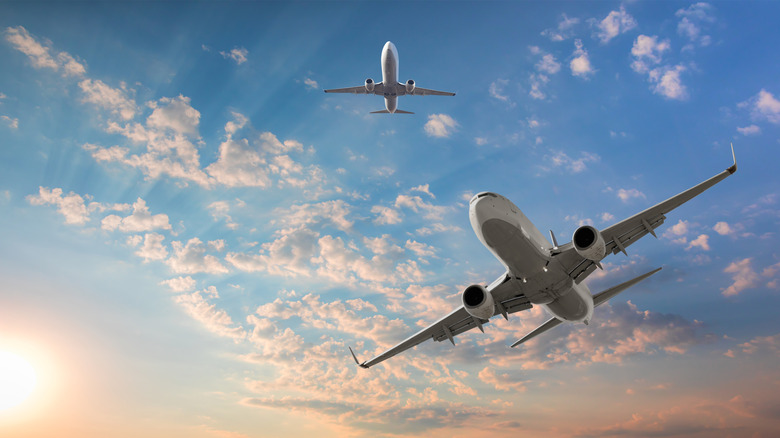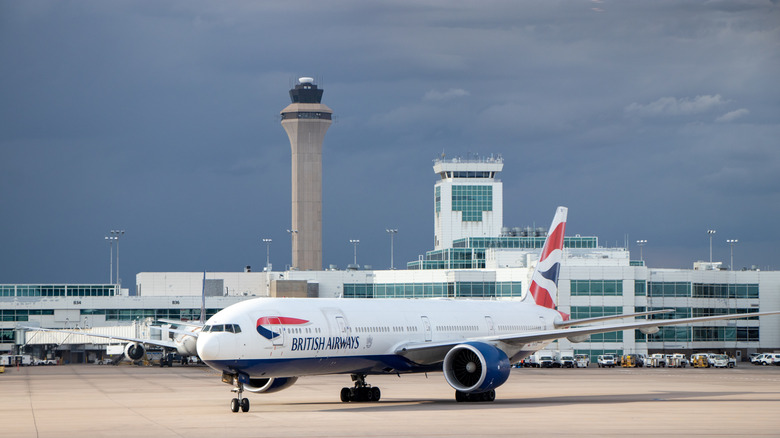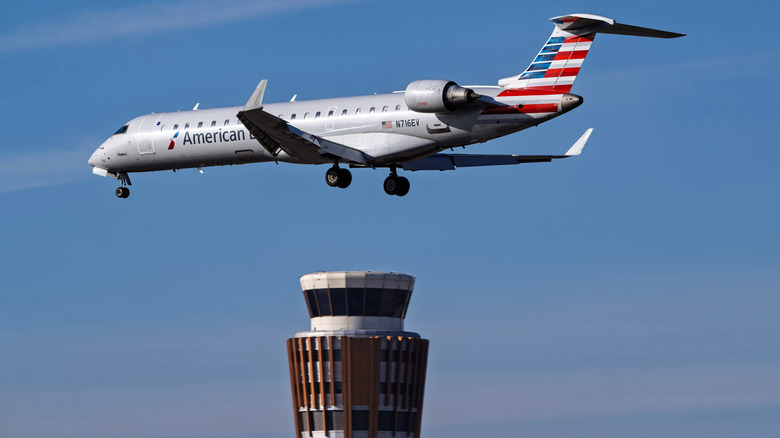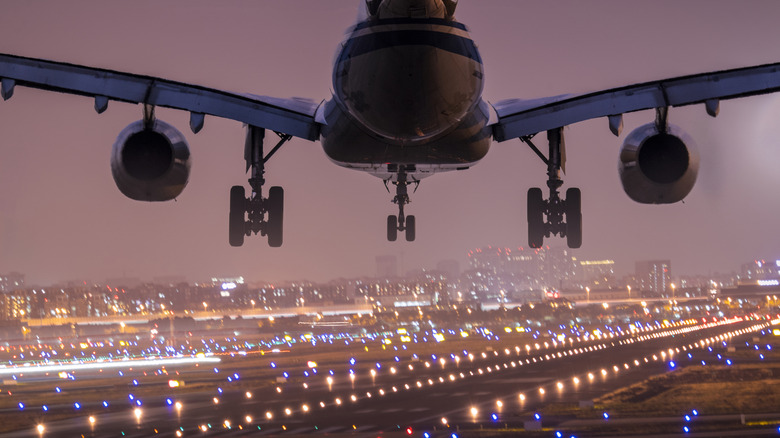Do Passenger Planes Have Speed Limits In The Sky?
Road speed limits date back to 1652, when horse-drawn vehicles were restricted from going at galloping speed within the New Netherland Colony, which covered parts of the mid-Atlantic United States. Today, the states with the highest and lowest speed limits are spread among the nation's four corners, although the federal government has established a maximum of 70 mph for rural interstate highways. With thousands of commercial airplanes in the sky at most times, it's natural to wonder if there are speed limits for planes as well.
Pilots operating airplanes must adhere to a complex array of speed limits. Some of them are permanent restrictions that are an integral part of training, while others are imposed in real time according to changes in conditions or due to an aircraft's limitations. One nearly universal airspeed restriction that applies around the globe is a maximum of 250 knots (288 mph) at altitudes below 10,000 feet above sea level. Planes must also slow down to below 200 knots (about 230 mph) when within 10 nautical miles (11.5 miles) of an airport and below 3,000 feet. These limits were put into effect after a surge in midair collisions during the expansion of global airline travel about a half century ago. An important trigger was the 1960 collision between a United Airlines Douglas DC-8 and a TWA Lockheed L-1049 Super Constellation over Brooklyn that killed 134 people — all 128 aboard the two planes and six more on the ground. Both planes were flying at close to 300 knots at the time of the crash, contributing to the high death toll and large debris field over the crowded New York metropolitan area. Air traffic controllers can also restrict the speed of planes as needed to better manage congestion, help reroute flights, or deal with equipment failures.
Airspace is classified using a letter system
The airspace below 10,000 feet is often crowded with planes trying to take off or land, and aircraft that are moving slowly can more easily avoid potential collisions. The maximum speed of 250 knots below 10,000 feet mentioned above is a rule that commercial passenger planes, smaller private jets, and light aircraft all must follow to ensure safety for everyone in the sky. The area around busy airports like Los Angeles International or London's Heathrow (one of the most luxurious airports in the world) is labeled as class B airspace.
The shape of these airspaces largely depends on the layout of and flight paths to and from each airport, but class B airspaces are usually larger at high altitudes than they are closer to the ground — picture an inverted wedding cake. While class B airspaces generally don't have any permanent speed limits of their own, the maximum speed of 250 knots holds true as most class B airspaces are designated at 10,000 feet or below. One notable exception is that of Denver International Airport, which has a class B airspace that extends to 12,000 feet above sea level because of the airport's elevation of about a mile. The class B airspace over New York ends at 7,000 feet to allow planes to fly over it on their way to destinations overseas or in the interior of the country.
Planes flying below a class B airspace or through a Visual Flight Reference (VFR) corridor are restricted to a maximum of 200 knots. VFR corridors are special zones in class B airspaces where pilots can fly without the assistance of instruments or air traffic controllers. The 37 largest airports in the United States have class B airspace status.
Guidelines are different around smaller airports
The area above and around smaller airports is labeled as class C or class D airspace. Class C airspace extends to a 5 nautical mile (about 5.75 mile) radius from the airport and up to 4,000 feet above sea level, with a second layer covering altitudes from 1,200 to 4,000 feet at a radius of 10 nautical miles (about 11.5 miles). Class D airspace is a 4 or 5-nautical mile wide cylinder that extends from the ground to 2,500 feet or the floor of the lowest established airspace.
Class D is used around smaller airports that are still big enough to have a control tower but aren't as busy as class C airports. Pilots must keep at least 3 statute miles (about 2.6 nautical miles) of clear visibility and avoid flying through clouds in class C and D airspace. While the air might seem like an open playground for pilots to decide their own paths and speed up and slow down as they please, air traffic is constantly monitored and guided by air traffic controllers.
Use of landing gear or wing flaps also limits a plane's speed
Pilots are constantly in radio contact with control towers on the ground for updated instructions on airspeed, heading, altitude, and more. In this way, air traffic control acts as an additional network of senses for pilots to help navigate their planes across the vast yet congested skies. Managing airspeed is an important tactic used by air traffic controllers to ensure smooth traffic flow and maintain a safe distance between aircraft, especially when the skies are crowded. While the airspace class restrictions mentioned above are permanent guidelines, in-flight airspeed clearances granted by controllers to pilots are temporary and updated frequently depending on traffic, weather, and other conditions. Think of how you constantly modify your speed on the highway to keep up with the flow of traffic and make space for merging and exiting vehicles, and imagine that guidance coming from a central location with radar tracking systems. That's a reasonable analogy to how air traffic control works with airspeed to space out traffic.
Some airplane speed limits are tied to the use of certain systems or features. For example, the windshield wipers on airplanes are only meant be used at speeds up to about 200 knots. Deploying landing gear or wing flaps will also limit how fast a plane can fly. That said, all of these speed restrictions don't slow down travel by an awful lot, as airplanes are cleared for speeds up to Mach 0.85 (about 570 mph) when at cruising altitude. Fortunately, most commercial flights spend the bulk of their time at altitudes where traffic is light, the views are spectacular, and speed limits aren't really necessary.



